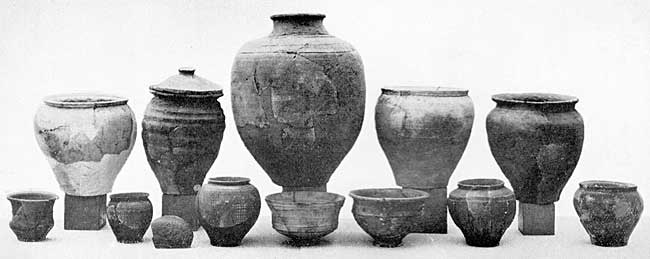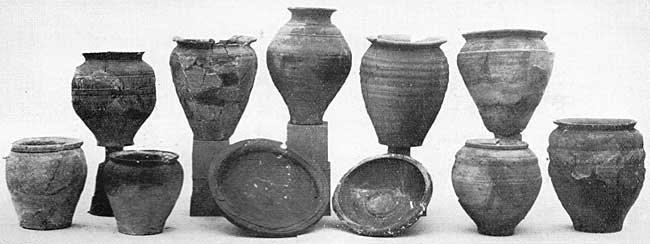A piece of "Samian" (Terra Sigillata) in the style of the South Gaulish potter BASSVS found in the clay ramming was of Claudian date and the pottery in the well was clearly of the same age with well-marked late-Celtic characteristics (Plates V. and VI.). Late-Celtic affinities are particularly noticeable in a complete flagon with cordons, which I found right at the base of the well; it is practically identical with a flagon from the Marne district, excepting that the base is not pedestalled; another urn with cordoned and swollen shoulder, but without a pedestal base, also shows a close parallel with still another type of Marne pottery (British Museum Guide to Early Iron Age Antiquities, Plate V., 11 and 13). The largest flagon is practically identical in form and decoration with one from Claudian Hofheim, whilst the fluted or corrugated cooking-pots have their counterpart in the late-Celtic urn-field of Swarling (VIII., 11.) and Aylesford.1

PLATE V. Pottery of Claudian well.

PLATE VI. Pottery of Claudian well.
Apart from the oyster shells which are abundant all over the site, this well is the only one which has yielded shells of the Freshwater Mussel, perhaps collected in the early days for possible pearls, for Caesar (according to Pliny) is said to have dedicated a necklace of British pearls to the Temple of Venus at Rome.
(1) For a detailed description of the pottery in this well, see my " Pottery of a Claudian well at Margidunum," Journal of Roman Studies, 1923, Vol. xiii., 114-126.
